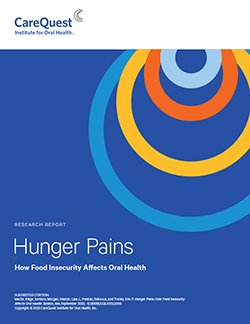Nearly 24 million adults in the US — approximately 9% of the adult population — experience food insecurity, according to CareQuest Institute’s 2023 State of Oral Health Equity in America survey. Survey results reveal that food insecurity is linked to poorer oral health outcomes.
Key findings on food insecurity from the survey — the largest in the industry focused on adults’ knowledge, attitudes, experiences, and behaviors related to oral health — include:
- Black (11%) and Hispanic (10%) respondents were the most likely to worry that their food would run out before being able to afford more, whereas white respondents were the least likely (5%).
- 15% of respondents aged 18-29 said they often could not afford to eat healthy, balanced meals, compared to 3% of those aged 60 years or older.
- Respondents with less than a high school education were most likely to say their food often did not last before they could get more (14%), compared to just 1% of those with post-graduate study or a professional degree.
- Individuals experiencing food insecurity were more likely to have poor oral health, more likely to lack dental insurance, and less likely to have visited a dentist within the past year.
The high rates of food insecurity in the US have a range of detrimental health consequences, including oral health problems. The authors of this research report call on health care professionals to integrate routine questions about food intake with all patients, and to help connect patients in need to food assistance programs, especially healthy food options. The report includes a list of food assistance programs.
You may also be interested in:
- Uninsured and in Need, a visual report that estimates more than 68 million US adults do not have dental insurance.
- Cost, Race, and the Persistent Challenges in Our Oral Health System, a report that summarizes findings from CareQuest Institute’s nationally representative, annual survey on oral health and takes a deep dive into factors that contribute to oral health disparities.
- The Oral-Systemic Connection Across the Lifespan, an infographic that summarizes research on the link between oral health and overall health at every age.
